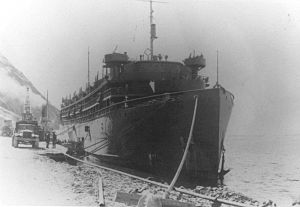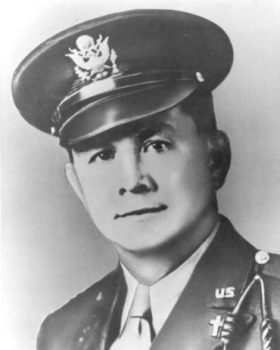
The Four Chaplains, also referred to as the Immortal Chaplains or the Dorchester Chaplains, were four World War II chaplains who died rescuing civilian and military personnel as the American troop ship SS Dorchester sank on February 3, 1943, in what has been referred to as the second-worst sea disaster of World War II. The Dorchester was a civilian liner converted for military service in World War II as a War Shipping Administration troop transport. She was able to carry slightly more than 900 military passengers and crew.

SS Absaroka was a steamer, named after the Absaroka Range of mountains in Montana and Wyoming, completed in February 1918 for the United States Shipping Board (USSB) which briefly operated the ship. From 17 September 1918 to 4 March 1919 the ship was commissioned as USS Absaroka with the identification number IX-2581 in United States Navy and operated by the Naval Overseas Transportation Service.
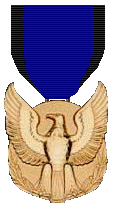
The Four Chaplains' Medal was a decoration approved by an Act of Congress on July 14, 1960. The decoration recognizes the heroic actions of four Army Chaplains during World War II.

SS Borinquen, the Taino language name for Puerto Rico, was a passenger liner launched 24 September 1930 and delivered to the Atlantic, Gulf & West Indies Steamship Lines (AGWI) in 1931 for operation by its subsidiary the New York & Porto Rico Line. The line operated the ship until it was requisitioned by the War Shipping Administration (WSA) the last day of 1941 for service as a troop transport. The line then operated the ship as agent for the WSA until 6 May 1944 when operation was transferred to the United States Army for support of the Normandy landings with the ship arriving off the beaches on 7 June 1944. Borinquen continued service post war until redelivered to the owners 14 June 1946. The ship was sold in 1949 and became the Arosa Star. After further sales and change in the cruise ship regulations the ship was again sold and grounded as La Jenelle on the California coast in 1970.

SS Manhattan was a 24,189 GRT luxury ocean liner of the United States Lines, named after the Manhattan borough of New York City. On 15 June 1941 she was commissioned as USS Wakefield and became the largest ship ever operated by the US Coast Guard. In 1942 she caught fire and was rebuilt as a troop ship. Manhattan never saw commercial service again.
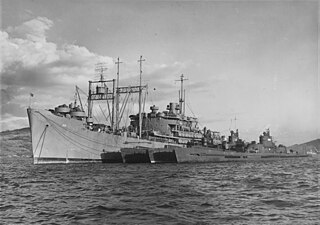
USS Euryale (AS-22) was built as the Hawaiian Merchant by the Federal Shipbuilding and Drydock Company in Kearny, New Jersey for the Matson Navigation Company. Hawaiian Merchant was launched 12 April 1941, minutes after sister ship Hawaiian Shipper, and was completed April 1941. Matson intended the ship to join Hawaiian Planter and Hawaiian Shipper in the U.S. Pacific Coast—Australia route. The ship was under United States Army Transportation Corps charter when the United States went to war and came under the control of the War Shipping Administration which allocated the ship to the Army's continued charter until the ship was purchased 15 April 1943 by the United States Navy and commissioned 2 December 1943 as USS Euryale (AS-22), serving as a submarine tender through the war. Euryale was decommissioned 7 October 1946, going into reserve until 9 August 1972 when she was delivered to the Maritime Administration with immediate sale to American Ship Dismantler, Inc. for disposal.
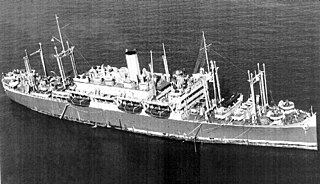
SS President Cleveland was originally built as Golden State for the United States Shipping Board (USSB), one of the planned World War I troop transports converted before construction into passenger and cargo vessels launched as Emergency Fleet Corporation Design 1029 ships first known, along with the smaller Design 1095 versions, in the trade as "State" ships due to names assigned for the nicknames of states and later as "535s" for their length overall. Almost all ships of both designs were renamed for United States presidents by May 1921, with Golden State being renamed President Cleveland. As one of the USSB-owned ships operated by agents of the board, President Cleveland was allocated to and operated by the Pacific Mail Steamship Company until sold by the USSB to the Dollar Steamship Line in 1925. After the demise of that line and creation of a new, replacement line, American President Lines, the ship remained with that line until government acquisition for the Second World War.

USS Mizar (AF-12) was the United Fruit Company fruit, mail and passenger liner Quirigua that served as a United States Navy Mizar-class stores ship in World War II.

USS Talamanca (AF-15) was the United Fruit Company cargo and passenger liner Talamanca that served as a United States Navy Mizar-class stores ship in World War II.

USS Merak (AF-21), the second Navy ship of the name, was the United Fruit Company cargo and passenger liner Veragua that served as a United States Navy Mizar-class stores ship in World War II.
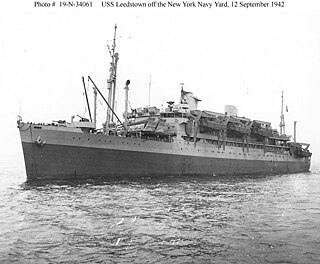
USS Leedstown (AP-73), built as the Grace Line passenger and cargo ocean liner SS Santa Lucia, served as a United States Navy amphibious assault ship in World War II. The ship had first been turned over to the War Shipping Administration (WSA) and operated by Grace Line as the WSA agent from February to August 1942 in the Pacific. In August the ship, at New York, was turned over to the Navy under sub-bareboat charter from WSA. She was sunk 9 November 1942 off the Algerian coast by a German submarine after German bombers caused damage the day before.

USS Henry T. Allen was a Harris class attack transport in service with the United States Army from 1940 to 1941. She was then transferred to the United States Navy where she served until 1946. She was scrapped in 1948. The ship was originally built as an Emergency Fleet Corporation Design 1029 ship in 1919 and operated in commercial service as Wenatchee and President Jefferson until being laid up in 1938.

SS Manchuria was a passenger and cargo liner launched 1903 for the San Francisco-trans Pacific service of the Pacific Mail Steamship Company. During World War I the ship was commissioned 25 April 1918–11 September 1919 for United States Navy service as USS Manchuria (ID-1633). After return to civilian service the ship was acquired by the Dollar Steamship Line in 1928 until that line suffered financial difficulties in 1938 and ownership of Manchuria was taken over by the United States Maritime Commission which chartered the ship to American President Lines which operated her as President Johnson. During World War II she operated as a War Shipping Administration transport with American President Lines its agent allocated to United States Army requirements. After World War II, she was returned to American President Lines, sold and renamed Santa Cruz. The liner was scrapped in Italy in 1952.

SS Catalina, also known as The Great White Steamer, was a 301-foot steamship built in 1924 that provided passenger service on the 26-mile passage between Los Angeles and Santa Catalina Island from 1924 to 1975. According to the Steamship Historical Society of America, Catalina has carried more passengers than any other vessel anywhere. From August 25, 1942 until April 22, 1946 the ship served as the Army troop ferry U.S. Army FS-99 at the San Francisco Port of Embarkation transporting more than 800,000 troops and other military personnel between embarkation camps and the departure piers. After a period of service as a floating discothèque, the ship ran aground on a sandbar in Ensenada Harbor in 1997 and partially sank on the spot. It was scrapped in 2009.

President Taylor was a cargo-liner, ex President Polk, ex Granite State, requisitioned for war service in December 1941 and allocated by the War Shipping Administration (WSA) to the U.S. Army and operating as a troopship in the Pacific Ocean in World War II when grounded and eventually lost on 14 February 1942.

SS Santa Rosa was a passenger and cargo ocean liner built for the Grace Line for operation by its subsidiary Panama Mail Steamship Company of San Francisco. She was the first to be launched and operating of four sister ships, the others in order of launch being Santa Paula, Santa Lucia and Santa Elena. All four ships, dubbed "The Four Sisters" and "The Big Four" were noted as the finest serving the West Coast and were of advanced technology. All served in World War II as War Shipping Administration (WSA) troop ships. Both Santa Lucia and Santa Elena were lost in air and torpedo attacks off North Africa.

USAHS Marigold was a United States Army hospital ship during World War II. The ship was built as Old North State in 1920 for the United States Shipping Board as a civilian passenger/cargo liner. The ship changed ownership and operating companies several times with name changes to President Van Buren and President Fillmore before being acquired for military transport service in 1941. After government acquisition during World War II President Fillmore served as a War Shipping Administration troop transport before conversion to hospital ship service.

SS Santa Paula was a passenger and cargo ocean liner built for the Grace Line. She was the second of four sister ships ordered in 1930 from the Federal Shipbuilding and Drydock Company of Kearny, NJ. Her regular service route included inter-coastal service between the east coast and the west coast of the US via the Caribbean and the Panama Canal. She later sailed on cruises from New York to the Caribbean and South America. She was the second of three vessels to bear the name Santa Paula for Grace Line service.

SS Antigua was a United Fruit Company passenger and refrigerated cargo liner completed as one of six nearly identical vessels, three built by Newport News Shipbuilding and three by Bethlehem Shipbuilding Corporation, for operation by the company's subsidiary the United Mail Steamship Company. The ship was the first of the ships built by Bethlehem Shipbuilding Corporation, Quincy, Massachusetts.

SS President Taft was launched as one of the "state" ships, Buckeye State, completed by the United States Shipping Board as cargo passenger ships after originally being laid down as troop transports. Buckeye State had been laid down as Bertrice but was converted and renamed before launching. Originally assigned to the Matson Navigation Company as the Shipping Board's agent, the ship was later renamed President Taft and assigned to Pacific Mail Steamship Company for operation. In 1925 the Shipping Board sold the ship to Dollar Steamship Company. President Taft was operated by Dollar and then its successor American President Lines until requisitioned by the War Department on 17 June 1941.
